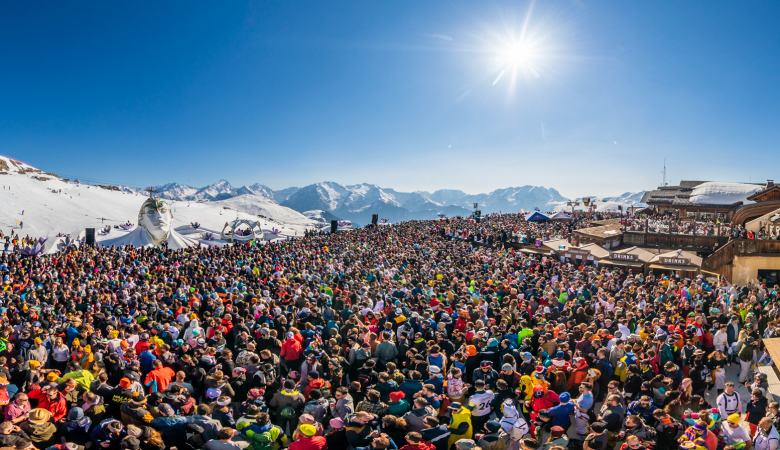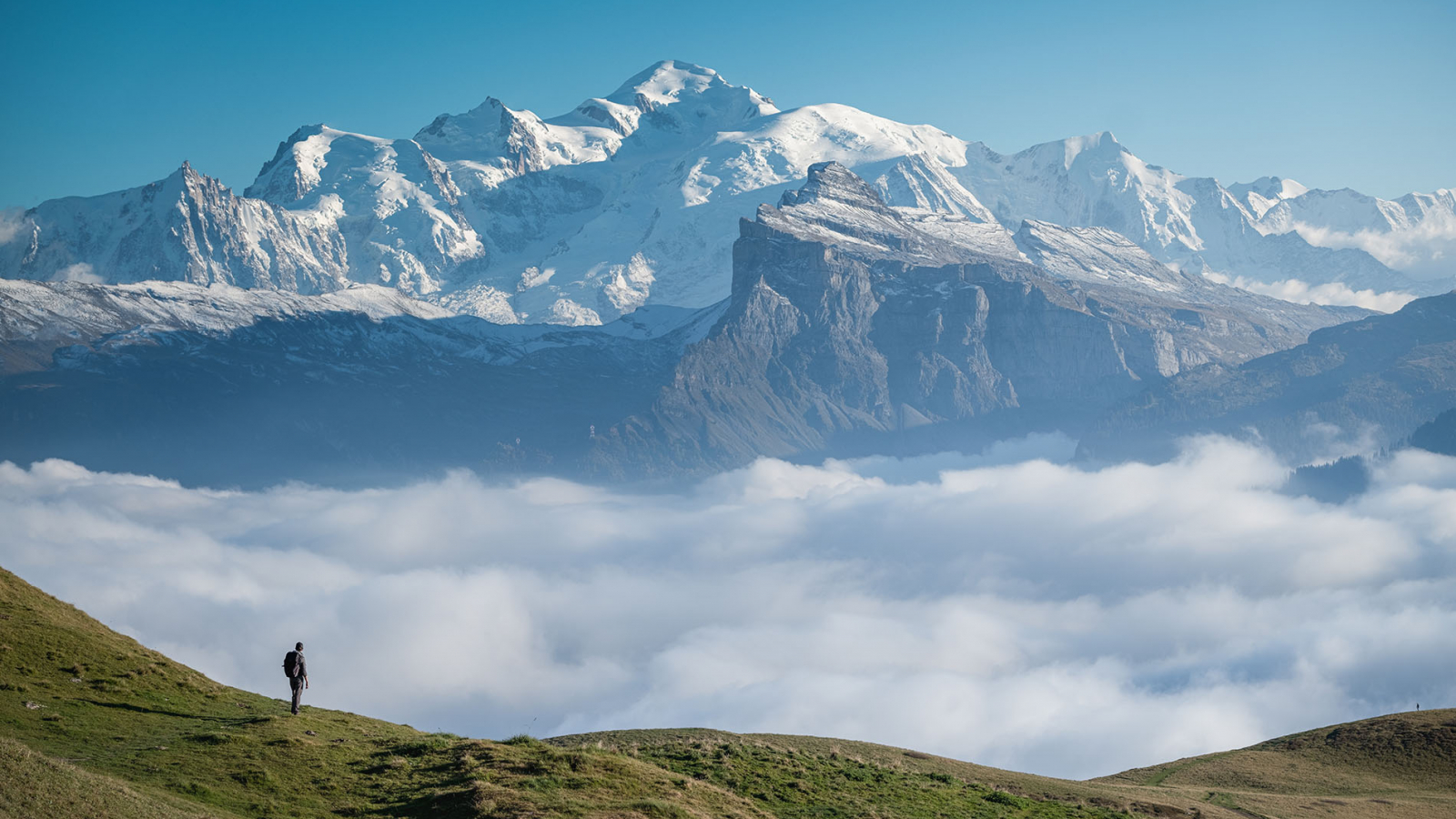
The French Alps
Overlooked by Mont-Blanc, the highest peak in Europe, and with an amazing location for outdoor activities, the Alps are a must-see destination in Auvergne-Rhône-Alpes.
Featuring four of the most beautiful Alpine lakes in France, three regional nature parks and two national parks as well as historic towns and spas, the Alps are a remarkable natural and cultural heritage. Here, authentic villages stand side by side with Alpine resorts, and visitors can enjoy an exceptional range of touristic attractions! Annecy, Evian, Aix-les-bains, Chamonix, Courchevel, Megève, Les 2 Alpes, Val Thorens and many others attract mountain enthusiasts both in summer and winter.
Whether it’s a family climb to the Mer de Glace, a duo stay on the shores of Lake Annecy, a bike trek across the Vercors, skiing in the 3 Valleys, or simply sharing a raclette with friends… the destination offers something for everyone.
Major events
Key people



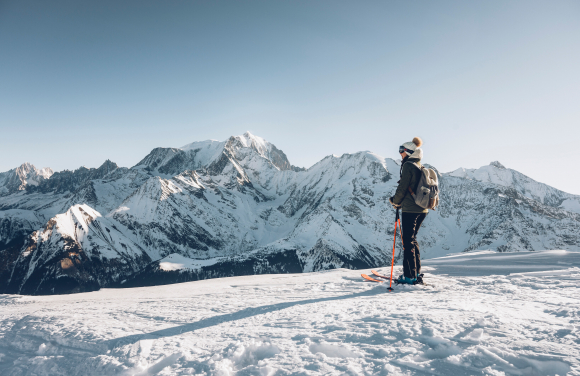




Mont-Blanc, the highest point of the Alps
Mont-Blanc, the cradle of mountaineering and at 4810 metres, is an iconic international destination. Thanks to its grandiose landscapes, glaciers and mythical peaks, this prestigious massif is a world point of reference in the field of high mountains.
Although Mont-Blanc is synonymous with performance and extremes, this tourist attraction is not just for sports enthusiasts. Here, anyone can experience the high mountains all year round. The Aiguille du Midi cable car is the perfect way to reach breathtaking landscapes safely. Visitors are transported to an altitude of 3,842 m in just 20 minutes. At the top, you will be sure to enjoy a change of scenery!
The Montenvers rack railway takes passengers from Chamonix to the famous Mer de Glace, the largest glacier in France.
The Mont-Blanc Tramway lifts visitors up the vertiginous slopes. This train, the highest in France, departs from Saint Gervais-les-Bains and travels to the Nid d'Aigle (2380 m) for an exceptional panorama of the Bionnassay glacier.
Even though Chamonix is considered to be the world capital of mountaineering and the venue for the first Winter Olympics in 1924, it is the whole of the Mont-Blanc region that shines and invites visitors to enjoy this world's unique scenery. Saint Gervais-les-Bains, les Contamines-Montjoie, Megève, and Combloux are all villages with unparalleled charm and a proven reputation.
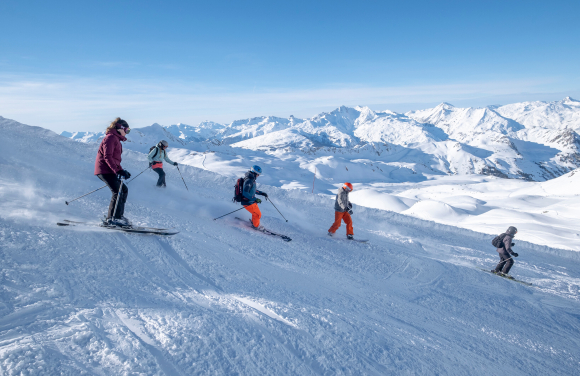



Alpine skiing areas
The immensity, the quality of the skiing areas and their popularity makes the French Alps the world's leading destination for winter sports. The destination contains more than 150! As a result of this leading position, they have been awarded the title of Olympic venue on three occasions: Chamonix in 1924, Grenoble in 1968 and Albertville in 1992.
The French Alps are unique in that they offer a wide variety of winter sports resorts. With its 600 km of linked slopes, the Domaine des Trois Vallées is the largest ski area in the world! Other domains also stand out thanks to their immensity. Among them are the Portes du Soleil with 12 resorts, Paradiski Les Arcs - La Plagne with its 425 km of slopes and the Tignes-Val-d'Isère and Sybelles domains that span over 300 km.
The area also has many village resorts with a history going back several centuries. These include Val-d'Isère, La Clusaz, Le Grand-Bornand, Valloire, Megève and Villard-de-Lans. The high altitude destinations are equally exceptional and include the resorts of Courchevel, Méribel, Chatel, Alpe d'Huez, Les 2 Alpes, Les Arcs, Avoriaz, Tignes, and many more!




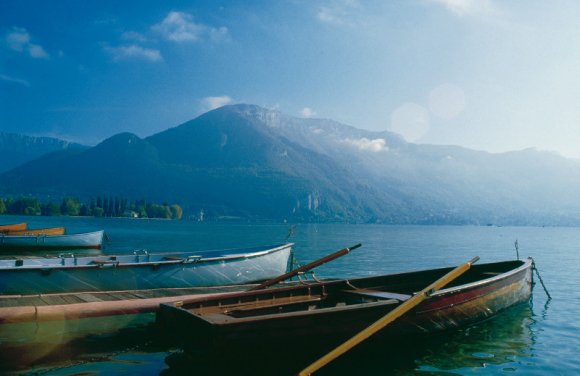
The great Alpine Lakes
The Lake Geneva is the largest Alpine lake in Europe. Its natural border with Switzerland offers many opportunities for walks along the water and is home to two spa towns.
Whereas Thonon-les-Bains is renowned for its water sports activities, Évian has gained an international reputation for its mineral water. Thanks to its spa facilities, its historical heritage and its golf course, it is a major stopover in the region. Among the must-see places on the coast is the medieval town of Yvoire. This "Plus Beaux Villages de France" has retained the charm of the old stones and the picturesque atmosphere of the old fishing villages.
The Lake Annecy features an idyllic landscape in the heart of an exceptional mountain cirque. This strictly protected area is considered to be the purest lake in Europe. Over and above its natural riches, the lake also has a unique heritage value thanks to the prehistoric dwellings preserved in the depths of its waters, which are listed as a UNESCO World Heritage Site. There are plenty of options for visitors to enjoy the beauty and attractions of the lake. These include hiking trails, greenways for cyclists and picturesque roads that pass through small villages and castles in Haute-Savoie. It is a perfect destination for all water sports activities and also offers the opportunity to discover Annecy, the Venice of the Alps.
The Lake Bourget is the largest glacial lake in France. A wide variety of landscapes can be found along its 40 km of shoreline. The Royal Abbey of Hautecombe, the burial place of the Counts of Savoy, stands on the steep and wild coastline, overlooking the waters On the opposite side stands the belvedere of La Chambotte, offering a 360° view of the Alps. Whereas the city of Chanaz maintains its charms on the banks of the Savière canal, the spa town of Aix-les-Bains, located to the south-east of the lake, is the perfect place to combine good life and relaxation.


Alpine vineyards and gastronomy
Stretching from Lake Geneva to Chambéry and covering an area of around 2000 hectares, the Savoyard vineyards are among the smallest vineyards in France. The vines cover the slopes between the lakes and the mountains as they accommodate the relief. Altitude, microclimates, changes in exposure and soils are all factors that influence a rich and varied production. Although they were not well known in the past, these wines are now enjoying a good reputation and make this region a gourmet destination to be discovered!
The Alpine territory has managed to preserve its authenticity and its traditional way of life. It has thus developed a real culture of taste, know-how and good products which gives it a unique character.
The best national hospitality schools train apprentices and future chefs, who are immediately exposed to noble products and to the experience of exceptional chefs. René Meilleur, Emmanuel Renault, Jean Sulpice, Marc Veyrat and many others enrich the Alpine cuisine and delight our taste buds with each serving.

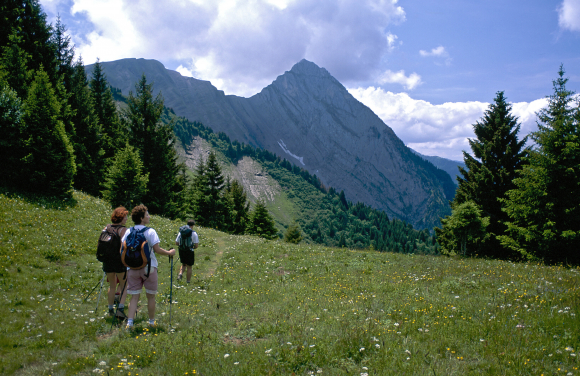



Natural Parks
The area boasts three regional nature parks and two national parks; the best known of which are the Vercors, the Bauges, the Chartreuse and the Vanoise. The uniqueness of the relief with its glaciers, needles, gorges, rock faces, caves and steep roads is what makes these protected areas so famous. All of them offer a wide variety of habitats and species together with a variety of landscapes suitable for countless outdoor activities such as hiking, climbing, caving, etc.

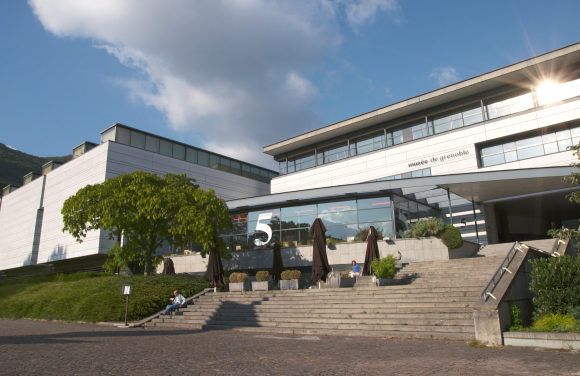
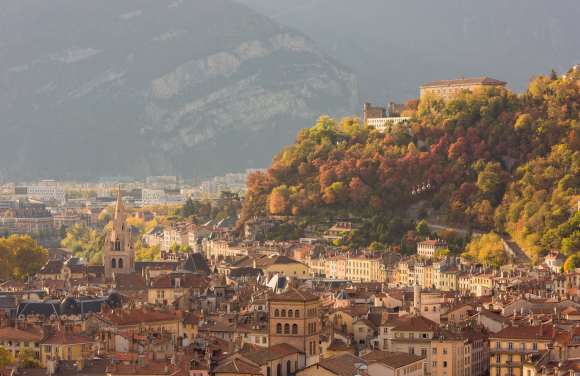


Grenoble, in the heart of the mountains
Modern city, city of art and history, sports city, but above all Grenoble is an Alpine city! It is surrounded by mountains and enjoys a privileged location near the great spaces between the massifs of Oisans, Belledone, Chartreuse, Trièves and Vercors.
A cable car (the first urban cable car in France!) can be used to quickly ascend to the top of the Bastille, the hill that overlooks the city and offers a very vast horizon.
Grenoble can be explored on foot, by bike, or by canoe on the Isère river. As the birthplace of Stendhal and a place full of history, the city is also attractive for its heritage value and, in particular, for its famous museum, the first museum of modern art.

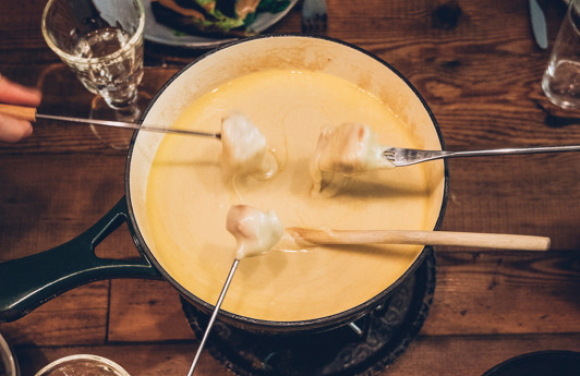

Local products, heritage and tradition
The Alps have a deep agro-pastoral tradition and are home to a wide variety of cheeses. There are no less than 8 AOP or IGP (Protected Designation of Origin or Protected Geographical Indication) that feature prominently in local gastronomy. These include Beaufort, Emmental, Abondance, Tomme de Savoie and Reblochon, to name but a few.
Other specialties such as Savoyard fondue, raclette, sausages, diots, Savoyard hams and alpine herbs also greatly expand the scope of discoveries and food tasting. Not forgetting the traditional Savoy cookie whose origin dates back to the 14th century.





Cities and spas in the Alps
Some spa towns in the Alps have preserved the elegance of the spa towns of the past. The architectural heritage of the town of Evian transports visitors back to the splendour of the early 20th century. The Buvette Cachat, a jewel of Art Nouveau with its curves, floral motifs and colours, is one of the city's landmarks alongside the Villa Sapinière and the Hotel Royal.
Not to be overlooked is Aix-les-Bains with its Château de la Roche du Roi, a majestic residence dating back to the 1900s and its rich palaces that bear witness to the Belle Époque and its Casino, one of the finest in France! The rich diversity of this heritage also includes the resort of Divonne-les-Bains, famous for its "divine water" as well as for its grand hotels such as the Hôtel du Golf, still admired to this day for its Art Deco style.
The winter ski resorts as well as the spa resorts of Saint Gervais and Brides-les-Bains are blessed with a privileged natural environment.

